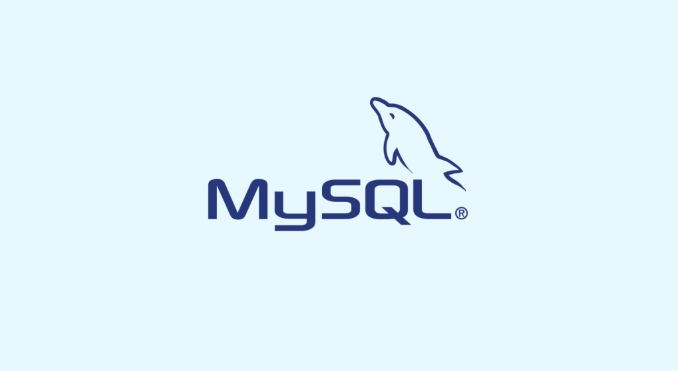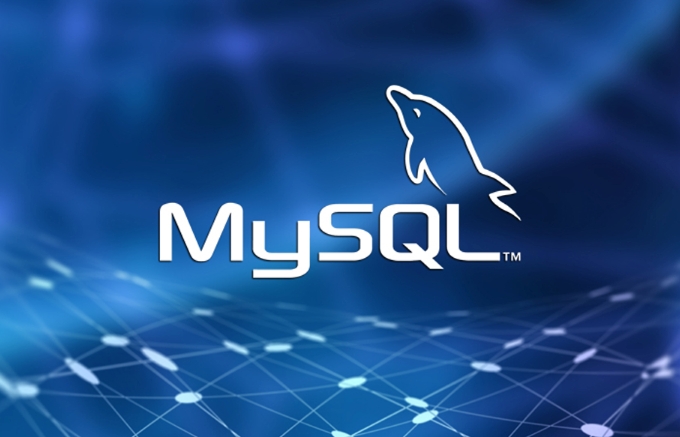How to add the MySQL bin directory to the system PATH
Jul 01, 2025 am 01:39 AMTo add the MySQL bin directory to the system PATH, it needs to be configured according to the different operating systems. 1. Windows system: Find the bin folder in the MySQL installation directory (the default path is usually C:\Program Files\MySQL\MySQL Server XX\bin), right-click "This Computer" → "Properties" → "Advanced System Settings" → "Environment Variables", select Path in "System Variables" and edit it, add the MySQL bin path, restart the command prompt after saving and enter mysql --version verification; 2. macOS and Linux systems: Bash user edits ~/.bashrc or ~/.bash_profile, Zsh user edits ~/.zshrc, add export PATH="/usr/local/mysql/bin:$PATH", and execute source after saving The command makes the configuration take effect and uses echo $PATH to check whether the MySQL path has been included; common problems include path errors, unrefreshed shells, confusion between user variables and system variables, multi-version conflicts, etc., and you need to check one by one to ensure that the configuration is correct and effective.

After MySQL is installed, many command-line operations need to enter the bin directory to run MySQL tools, such as mysql , mysqldump , etc. In order to avoid manually switching paths every time, adding MySQL's bin directory to the system PATH is a very practical operation. The following explains how to set it up according to different operating systems.

How to add MySQL bin to PATH on Windows system
On Windows, setting PATH through environment variables is most common. Find the bin folder in the MySQL installation directory (the default path is usually C:\Program Files\MySQL\MySQL Server XX\bin ), and follow the following steps:

- Right-click "This Computer" or "My Computer" and select "Properties"
- Click "Advanced System Settings" on the left
- Click "Environment Variable" in the pop-up window
- In the System Variables area, find and select
Path, click Edit - Click "New" and enter the
binpath of MySQL - Continuously point "OK" to save all settings
After completion, open a new command prompt window and enter mysql --version to test whether it takes effect. If the version information is displayed, the configuration is successful.
How to add PATH on macOS and Linux systems
macOS and Linux usually use Bash or Zsh as the default shell, and the configuration method is similar, mainly modifying the configuration file of the corresponding shell.

Bash User:
Edit the ~/.bashrc or ~/.bash_profile file and add the following content:
export PATH="/usr/local/mysql/bin:$PATH"
Zsh User:
Edit the ~/.zshrc file, and add the above line of code.
After saving, execute source ~/.bashrc or source ~/.zshrc to make the configuration take effect immediately. You can use echo $PATH to see if the current PATH contains the MySQL path.
Note: The MySQL installation locations may be different in different systems. You can use
which mysqlor find the installation directory to confirm the actual path.
Frequently Asked Questions and Notes
Sometimes, PATH is clearly set, but the command is still unrecognized. This may be caused by the following reasons:
- The path is written incorrectly : for example, there are too many spaces, misspellings, or using backslashes
\instead of forwardslashes/ - The shell has not been refreshed : remember to run the
sourcecommand after modifying the configuration file, otherwise the new terminal will take effect - User variable vs System variable : Is the current user's PATH or system level set under Windows? Make sure you added it in the correct variable
- Multi-version conflict : If multiple MySQL or MariaDB are installed in the system, there may be command conflicts. You can use
which mysqlto check which path the executable file is called.
Basically that's it. The whole process is not complicated, but some details are easy to ignore, especially the issues of paths and shell types. As long as you check it step by step, it can usually be done.
The above is the detailed content of How to add the MySQL bin directory to the system PATH. For more information, please follow other related articles on the PHP Chinese website!

Hot AI Tools

Undress AI Tool
Undress images for free

Undresser.AI Undress
AI-powered app for creating realistic nude photos

AI Clothes Remover
Online AI tool for removing clothes from photos.

Clothoff.io
AI clothes remover

Video Face Swap
Swap faces in any video effortlessly with our completely free AI face swap tool!

Hot Article

Hot Tools

Notepad++7.3.1
Easy-to-use and free code editor

SublimeText3 Chinese version
Chinese version, very easy to use

Zend Studio 13.0.1
Powerful PHP integrated development environment

Dreamweaver CS6
Visual web development tools

SublimeText3 Mac version
God-level code editing software (SublimeText3)

Hot Topics
 Establishing secure remote connections to a MySQL server
Jul 04, 2025 am 01:44 AM
Establishing secure remote connections to a MySQL server
Jul 04, 2025 am 01:44 AM
TosecurelyconnecttoaremoteMySQLserver,useSSHtunneling,configureMySQLforremoteaccess,setfirewallrules,andconsiderSSLencryption.First,establishanSSHtunnelwithssh-L3307:localhost:3306user@remote-server-Nandconnectviamysql-h127.0.0.1-P3307.Second,editMyS
 Performing logical backups using mysqldump in MySQL
Jul 06, 2025 am 02:55 AM
Performing logical backups using mysqldump in MySQL
Jul 06, 2025 am 02:55 AM
mysqldump is a common tool for performing logical backups of MySQL databases. It generates SQL files containing CREATE and INSERT statements to rebuild the database. 1. It does not back up the original file, but converts the database structure and content into portable SQL commands; 2. It is suitable for small databases or selective recovery, and is not suitable for fast recovery of TB-level data; 3. Common options include --single-transaction, --databases, --all-databases, --routines, etc.; 4. Use mysql command to import during recovery, and can turn off foreign key checks to improve speed; 5. It is recommended to test backup regularly, use compression, and automatic adjustment.
 Handling NULL Values in MySQL Columns and Queries
Jul 05, 2025 am 02:46 AM
Handling NULL Values in MySQL Columns and Queries
Jul 05, 2025 am 02:46 AM
When handling NULL values ??in MySQL, please note: 1. When designing the table, the key fields are set to NOTNULL, and optional fields are allowed NULL; 2. ISNULL or ISNOTNULL must be used with = or !=; 3. IFNULL or COALESCE functions can be used to replace the display default values; 4. Be cautious when using NULL values ??directly when inserting or updating, and pay attention to the data source and ORM framework processing methods. NULL represents an unknown value and does not equal any value, including itself. Therefore, be careful when querying, counting, and connecting tables to avoid missing data or logical errors. Rational use of functions and constraints can effectively reduce interference caused by NULL.
 Analyzing the MySQL Slow Query Log to Find Performance Bottlenecks
Jul 04, 2025 am 02:46 AM
Analyzing the MySQL Slow Query Log to Find Performance Bottlenecks
Jul 04, 2025 am 02:46 AM
Turn on MySQL slow query logs and analyze locationable performance issues. 1. Edit the configuration file or dynamically set slow_query_log and long_query_time; 2. The log contains key fields such as Query_time, Lock_time, Rows_examined to assist in judging efficiency bottlenecks; 3. Use mysqldumpslow or pt-query-digest tools to efficiently analyze logs; 4. Optimization suggestions include adding indexes, avoiding SELECT*, splitting complex queries, etc. For example, adding an index to user_id can significantly reduce the number of scanned rows and improve query efficiency.
 Managing Transactions and Locking Behavior in MySQL
Jul 04, 2025 am 02:24 AM
Managing Transactions and Locking Behavior in MySQL
Jul 04, 2025 am 02:24 AM
MySQL transactions and lock mechanisms are key to concurrent control and performance tuning. 1. When using transactions, be sure to explicitly turn on and keep the transactions short to avoid resource occupation and undolog bloating due to long transactions; 2. Locking operations include shared locks and exclusive locks, SELECT...FORUPDATE plus X locks, SELECT...LOCKINSHAREMODE plus S locks, write operations automatically locks, and indexes should be used to reduce the lock granularity; 3. The isolation level is repetitively readable by default, suitable for most scenarios, and modifications should be cautious; 4. Deadlock inspection can analyze the details of the latest deadlock through the SHOWENGINEINNODBSTATUS command, and the optimization methods include unified execution order, increase indexes, and introduce queue systems.
 Aggregating data with GROUP BY and HAVING clauses in MySQL
Jul 05, 2025 am 02:42 AM
Aggregating data with GROUP BY and HAVING clauses in MySQL
Jul 05, 2025 am 02:42 AM
GROUPBY is used to group data by field and perform aggregation operations, and HAVING is used to filter the results after grouping. For example, using GROUPBYcustomer_id can calculate the total consumption amount of each customer; using HAVING can filter out customers with a total consumption of more than 1,000. The non-aggregated fields after SELECT must appear in GROUPBY, and HAVING can be conditionally filtered using an alias or original expressions. Common techniques include counting the number of each group, grouping multiple fields, and filtering with multiple conditions.
 Paginating Results with LIMIT and OFFSET in MySQL
Jul 05, 2025 am 02:41 AM
Paginating Results with LIMIT and OFFSET in MySQL
Jul 05, 2025 am 02:41 AM
MySQL paging is commonly implemented using LIMIT and OFFSET, but its performance is poor under large data volume. 1. LIMIT controls the number of each page, OFFSET controls the starting position, and the syntax is LIMITNOFFSETM; 2. Performance problems are caused by excessive records and discarding OFFSET scans, resulting in low efficiency; 3. Optimization suggestions include using cursor paging, index acceleration, and lazy loading; 4. Cursor paging locates the starting point of the next page through the unique value of the last record of the previous page, avoiding OFFSET, which is suitable for "next page" operation, and is not suitable for random jumps.
 Setting up asynchronous primary-replica replication in MySQL
Jul 06, 2025 am 02:52 AM
Setting up asynchronous primary-replica replication in MySQL
Jul 06, 2025 am 02:52 AM
To set up asynchronous master-slave replication for MySQL, follow these steps: 1. Prepare the master server, enable binary logs and set a unique server-id, create a replication user and record the current log location; 2. Use mysqldump to back up the master library data and import it to the slave server; 3. Configure the server-id and relay-log of the slave server, use the CHANGEMASTER command to connect to the master library and start the replication thread; 4. Check for common problems, such as network, permissions, data consistency and self-increase conflicts, and monitor replication delays. Follow the steps above to ensure that the configuration is completed correctly.






